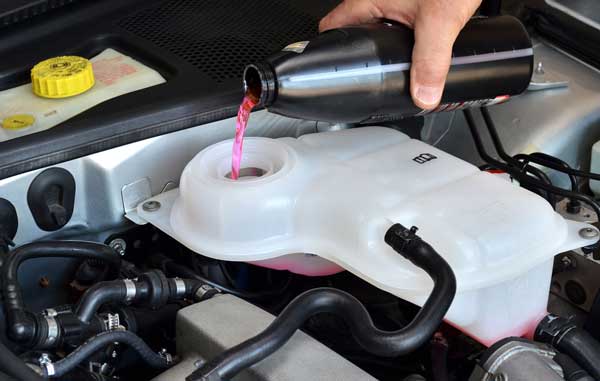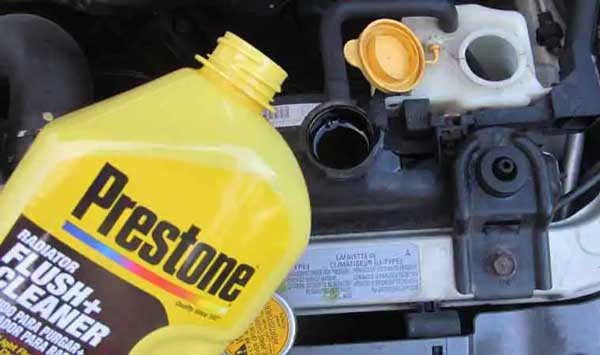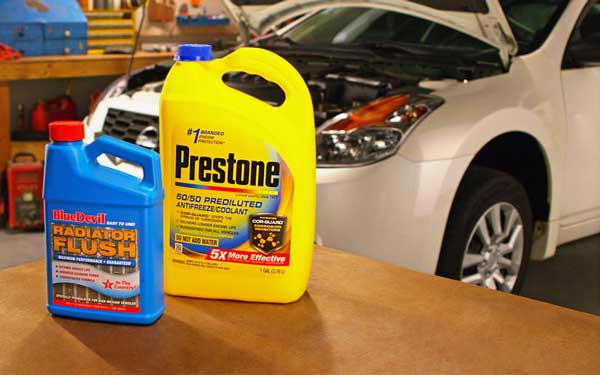Flushing the radiator helps improve the cooling efficiency by removing rust and sediments. However, your car may start overheating after the radiator flush. That indicates a problem with the cooling system.
So, why is my car overheating after the radiator flush? Your vehicle overheats after radiator flushing when the rust removed causes coolant leakage, and sediments removed expose leakage holes and cracks on the system. Thus, the engine may overheat if flushing is poorly done, causing air pockets in the system.
This article reviews the possible causes of your car overheating after radiator flush and the solutions to prevent such problems in the future. In addition, it covers necessary information on how to flush the radiator and its importance.
Why Is My Car Overheating After Radiator Flush?

The cooling system accumulates sediments and contaminants with time. Metallic parts get corroded and rust built-up blocks the system free flow of the coolant.
It is, therefore, essential to flush the radiator to remove these impurities and rust from the system. The flushing process aims to improve the cooling system efficiency. However, the flushing process sometimes causes more harm than good, and you notice your car overheating instead of cooling better.

Let’s discuss the leading causes of car overheating after radiator flush;
1. Coolant Leakage
After flushing, all the rust from the corroded metal parts gets cleaned off, leaving a thin surface. This is because rust causes wear and tear of metallic components.
Likewise, after flushing the rust, the affected parts become weak and burst under pressure and high temperatures. The bursting causes coolant leakages that drop the level of the coolant, causing engine overheating.

Once you flush the radiator, it exposes the ailing parts in the system leading to more problems that cause overheating of the engine.
2. Air-Pockets In The System
Radiator flushing involves the removal of the old coolant and replacing it with a new coolant. In the process, if the replacement is done in a hurry, air pockets develop inside the system affecting the cooling efficiency of the system.
Air trapped in the cooling system causes the engine to overheat since it doesn’t absorb as much heat from the engine as the coolant.
3. Clogged Radiator
Radiator flushing removes any sediments and rust in the system for smooth flow of the coolant. The rust and deposits are sometimes detached from the system and clog the radiator hoses and fins.
Once the radiator is clogged, its cooling function is significantly reduced as little or no coolant passes through, causing the engine to overheat.

4. Overused Or Low Levels Of Engine Oil
If your car overheats after radiator flushing, you need to check on other parameters that can cause your engine to overheat. Such parameters include overused engine oil.
The engine oil is used to lubricate the engine’s moving parts and regulate the engine’s temperature. As the oil flows through the engine parts, it absorbs excess heat and releases it to the environment.
Low engine oil levels reduce the amount of heat transferred, causing overheating of the engine. If the oil has been used for a long, it loses its functionality value and no longer helps to cool the engine.
How To Fix Car Overheating After Radiator Flush?

Before you even seek to fix the problematic parts, there are a few things you need to do and then follow some steps to fix the problem.
1. Identify The Problematic Parts
Step 1. Open the hood and inspect the vehicle to identify any leaking or damaged parts.
Step 2. Get under the engine and trace the leak from below if you cannot locate the problematic parts from the top.
Step 3. Check the engine oil level and thickness to determine if it’s overused. Step 4. Once you locate the ailing part(s), mark the parts and move on to repair them.
2. Fix The Problematic Parts
Step 5. Analyze the leaking part for the best solution at hand. Most of the leakages require replacement for a permanent solution.
However, before seeking a replacement, you can repair it temporarily to allow you to drive to the nearby mechanic shop.
Step 6. Drain the overused oil and replace it with new oil for efficient engine cooling.
Why Do You Need to Flush the Radiator?
Radiator flushing, also known as coolant flushing, is a cleaning process to remove any rust particles and sediments in the cooling system to improve its efficiency.
It involves draining the existing coolant and replacing it with a new coolant. The new coolant is added with a cleaning agent to dislodge the rust and sediments. The coolant is again drained with the deposits, and a new coolant and conditioner are topped up.

So, radiator flush, if done appropriately, especially for coolants with high mineral levels, improves the cooling efficiency of your coolant.
If your car is overheating after a radiator flush, you may be interested in our articles on oil in coolant reservoir but car not overheating and car overheat only when accelerating. These articles provide valuable information and solutions to common car problems related to overheating and coolant leaks, such as head gasket failures, water pump issues, and other cooling system problems. Whether you’re noticing oil in the coolant reservoir but your car is not overheating or your car overheats only when accelerating, our team at Car Problem Solved can help you diagnose and fix the problem.FAQs
Read through the following questions to better understand why your car overheats after the radiator flush.
Driving an overheating engine can be dangerous, especially if the temperatures are too high. The machine can overheat and cause damage to other parts.
You should pack the car and stop the engine. Allow it to cool, and then inspect the engine and the cooling system for an appropriate remedy.
Yes. Radiator flushing helps clean the rust and sediments in the cooling system that would otherwise affect the cooling efficiency. However, radiator flushing must be done correctly to avoid causing more harm.
Ensure you follow the correct procedure of flushing to avoid creating air pockets in the cooling system.
Yes. You can repair the problematic parts with the right tools and skills. Some minor leakages need basic knowledge to fix; hence you can DIY.
Consult a mechanic if the damage is beyond repair and needs a cracked engine block replacement.
Conclusion
Radiator flushing cleans any sediments and rust in the cooling system. However, it can expose underlying problems in the cooling system that can cause the engine to overheat.
Once cleaned, the radiator hoses and metallic parts may leak the coolant while the sediments and rust get trapped in the radiator. Accumulating these particles blocks the radiator, reducing its cooling functionality and leading to engine overheating.
